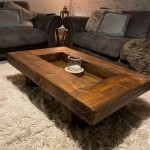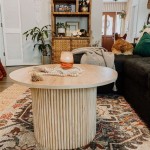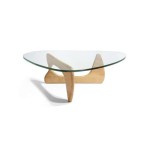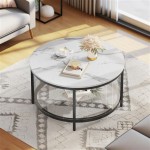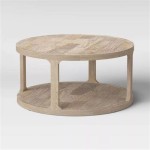How To Make Your Own Coffee Table Book
Creating a coffee table book is a rewarding endeavor, allowing one to curate and showcase a collection of images, designs, or information in a visually appealing and accessible format. The process involves careful planning, diligent execution, and attention to detail. This article will outline the key steps involved in producing a professional-quality coffee table book, from conceptualization to printing.
The term "coffee table book" refers to a large, hardbound book intended for casual browsing and display. Its purpose is often aesthetic, serving as a conversation starter and reflecting the owner's interests. Unlike traditional books designed for in-depth reading, coffee table books prioritize visual content and design, making them accessible and engaging for a wide audience.
The rise of digital photography and design tools has made creating a coffee table book more accessible than ever. Individuals and organizations can now produce high-quality books without the need for specialized publishing expertise. This democratization of bookmaking allows for greater creative control and the opportunity to share personal stories and visions with the world.
Defining Your Vision and Content
The first crucial step is to define the book's overall vision. This involves determining the central theme, target audience, and aesthetic style. A clear understanding of these elements will guide all subsequent decisions, from content selection to design choices.
Consider the subject matter carefully. Is the book intended to showcase a collection of photographs, artwork, recipes, or historical documents? The subject matter should be something the creator is passionate about and knowledgeable about, ensuring a genuine and engaging final product. Narrowing the focus to a specific theme or subject area will increase the book's impact and coherence.
Identifying the target audience is equally important. Who will be browsing through this book? Understanding the intended reader's interests, background, and preferences will inform the design decisions. For example, a book aimed at children will have a different design aesthetic than one intended for art collectors.
Once the theme and audience are established, begin gathering and curating the content. This may involve selecting photographs, writing text, or creating illustrations. The quality of the content is paramount, so ensure that all images are high-resolution and that the text is well-written and accurate.
Pay close attention to copyright considerations. Obtaining permission to use copyrighted material is essential to avoid legal issues. When using images or text created by others, always seek permission from the copyright holder and provide proper attribution.
Developing a detailed outline is crucial for structuring the book effectively. Organize the content into chapters or sections, ensuring a logical flow and narrative. Consider the order in which images and text will be presented to create a visually appealing and engaging experience for the reader.
The overall aesthetic style should align with the theme and target audience. Consider the tone of the book. Is it meant to be formal and sophisticated, or casual and playful? The design elements, such as typography, color palette, and layout, should reflect the desired tone.
Designing the Layout and Formatting
Layout and formatting are critical components of a well-designed coffee table book. The visual presentation of the content significantly impacts the reader's experience and overall impression of the book.
Utilize professional design software such as Adobe InDesign, QuarkXPress, or Affinity Publisher. These programs offer the tools and flexibility needed to create sophisticated layouts and typography. Familiarize yourself with the software's features and capabilities to maximize its potential.
Establish a consistent grid system to maintain visual harmony throughout the book. A grid system provides a framework for aligning elements and creating a balanced layout. Adhering to the grid ensures that the book feels cohesive and professional.
Choose typography carefully. Select fonts that are legible and complement the book's theme. Consider the size, weight, and spacing of the text to optimize readability. Use different fonts for headings and body text to create visual hierarchy and distinction.
Pay attention to image placement and cropping. Images should be sized and positioned to maximize their impact. Cropping images effectively can draw attention to key details and create a more dynamic composition.
Use white space strategically. White space, also known as negative space, is the empty area around elements on a page. It helps to create visual breathing room and prevent the layout from feeling cluttered. Effective use of white space can enhance readability and highlight key elements.
Ensure that all images are high-resolution (at least 300 dpi) to avoid pixelation when printed. Low-resolution images will appear blurry and detract from the book's overall quality.
Proofread all text carefully to eliminate errors. Typos and grammatical mistakes can detract from the book's credibility. Have someone else proofread the text as well to catch errors that you may have missed.
Preparing for Printing and Production
Once the design is finalized, the next step is to prepare the book for printing. This involves selecting a printing service, exporting the files in the correct format, and reviewing proofs to ensure accuracy.
Research different printing services and compare their prices, quality, and turnaround times. Consider both online and local printers. Obtain quotes from several printers to ensure you are getting the best value for your money.
Decide on the book's specifications, including the size, paper type, binding style, and cover finish. These choices will impact the book's overall appearance and durability. Consider the weight and texture of the paper, as well as the type of binding (e.g., hardcover, softcover, saddle stitch).
Export the files in the correct format for printing. Most printers require PDF files. Ensure that the PDF settings are optimized for print quality. This typically involves embedding fonts, setting the color profile to CMYK, and using high-resolution images.
Request a proof copy from the printer before committing to a large print run. A proof copy allows you to review the book's layout, color accuracy, and overall quality. Carefully examine the proof for any errors or issues that need to be corrected.
Pay close attention to color management. Colors may appear differently on screen than they do in print. Calibrate your monitor and use a color profile that is compatible with the printer's equipment to ensure accurate color reproduction.
Consider adding special finishes to the cover, such as spot UV coating, embossing, or foil stamping. These finishes can enhance the book's visual appeal and create a more premium feel.
Once you are satisfied with the proof copy, approve the print run. Work closely with the printer to ensure that the books are produced to your specifications and delivered on time.
Consider digital distribution options. In addition to printing physical copies, you may also want to create a digital version of your book for distribution on platforms such as Amazon Kindle, Apple Books, or Google Play Books.
Promote your coffee table book through social media, websites, and other marketing channels. Share images and excerpts from the book to generate interest and drive sales. Consider hosting a book launch event to celebrate the publication and connect with potential readers.
Creating a coffee table book is a complex but fulfilling process. By carefully planning each step, from conceptualization to printing, one can produce a high-quality book that showcases their vision and captivates their audience.

How To Create A Custom Coffee Table Book With Unique Content And Style Mixbook Inspiration
How To Make A Coffee Table Book Using Your Own Photos Posh In Progress
How To Make A Coffee Table Book Using Your Own Photos Posh In Progress

30 Totally Unique Ways To Decorate Your Home With Books Coffee Table Diy Make Own

Designer Decor Books Diy Coffee Table Home Projects South N R

The Ultimate Guide To Coffee Table Photo Books Photobox Blog

Diy Coffee Table Rustic Stamped Books Craftbits Com

How To Make A Coffee Table Book

Make Your Own Coffee Table Photo Book Cewe

Coffee Table Books Decor Best Designer Diy Chanel Prada Dior

